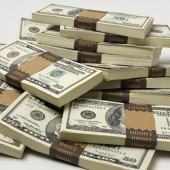 Recent articles in the Los Angeles Times and Inc. magazine discussed the release of a report from the Secret Service in which it was revealed that 2009 saw a year-over-year increase in counterfeit money seizures of greater than 130%.
Recent articles in the Los Angeles Times and Inc. magazine discussed the release of a report from the Secret Service in which it was revealed that 2009 saw a year-over-year increase in counterfeit money seizures of greater than 130%.
According to the report, in 2009, the Secret Service seized more than $182 Million in counterfeit money, domestically.
Of interest in these articles was the generalized acknowledgement by the Secret Service that the phenomenon of "washed notes" had genuinely reached epidemic proportions. In the LA Times article, the recent take-down of a washed-note operation in San Diego was claimed to be responsible for over $100,000 of currency being passed to local businesses in the area.
Of course, we've been aware of the washed-note issue since early 2006, when our customers began telling us that they were seeing $100 bills with "blue fluorescent" stripes in them. For those not aware of what I'm referring to, the reason counterfeiters wash low-denomination notes and use them to print counterfeit $100's is because the paper from the lower denomination note can pass the "currency tester pen". We featured this issue in a newsletter to our subscribers in the spring of `06.
Smart "washers" are using $5 notes as the "base stock" from which they print $100 counterfeits. That's because the $5 bill has a security thread in approximately the same location as the $100, and it has a watermark of a face (it's Lincoln's face, not Benjamin Franklin's - but hardly anybody can really tell the difference).

When the "washed $5" counterfeits are put under a Fraud Fighter UV detector device, the security thread will glow "blue" instead of "pink".
Particularly vulnerable to this type of counterfeit are the small businesses who do not have formalized training or equipment to perform currency verification during the transaction.


